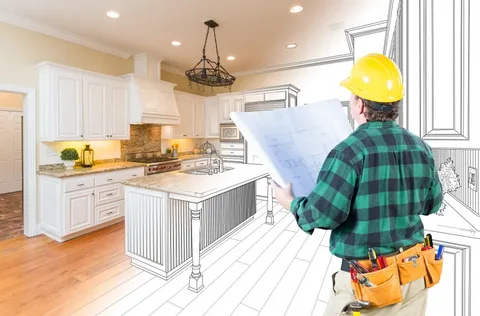
Are you dreaming of sprucing up your kitchen or a dedicated home office space but worried about tapping into your home equity? While home equity loans can be a tempting way to finance your dream renovation, they require built-up equity, which isn’t always an option for newer homeowners or those who want to get started sooner rather than later. Fortunately, several options can help you achieve your renovation goals without putting your home on the line.
This blog will explore four strategies to fund your renovation project to transform your space without compromising your financial security.
4 Ways to Finance a Renovation Without Tapping into Your Home’s Equity
- Bootstrapping and Sweat Equity
Tackling home improvement projects with your funds can be a savvy way to transform your living space while avoiding interest payments. Many homeowners opt for this approach, using their checking accounts or earmarked savings to cover renovation costs. Financial planners suggest setting aside a portion of your monthly income for future home improvements.
For handy people, injecting sweat equity into your project can be a significant cost saver. Painting, refinishing floors, or installing new cabinet hardware are all DIY-friendly options that can be completed with some elbow grease and research. Many home improvement stores offer workshops and consultations to empower homeowners to undertake DIY projects. Hiring qualified professionals is essential for more extensive renovations or those requiring specialized skills.
2. Personal Home Improvement Loans
Getting a home improvement loan can be a good option if your project requires more upfront capital than you have readily available. Unlike home equity loans, which involve a lengthy appraisal and underwriting process, personal loans offer a quicker and more straightforward path to funding. Approval times can be as fast as a week, allowing you to start your project sooner.
Personal loan interest rates vary between 6% and 36%, with preferential rates extended to individuals boasting good or excellent credit scores. Repayment periods are shorter than home equity loans, spanning 2 to 7 years. This can be advantageous as it keeps your total interest cost lower. The fixed-rate nature of personal loans also simplifies budgeting, as your monthly payment will remain consistent throughout the loan term.
3. Government Loan Programs for Targeted Improvements
Getting a home improvement loan can be simplified with the FHA 203(k) rehabilitation loan, designed to assist in buying or refinancing a home and remodeling it all with a single mortgage. This program is designed to help homeowners finance essential repairs and upgrades that improve a home’s safety, accessibility, or energy efficiency.
With this loan, borrowers can choose between a standard 203(k) loan and a limited 203(k) loan tailored for smaller renovation projects not involving structural work. An accredited Housing and Urban Development (HUD) consultant is required to oversee the project and ensure compliance with program guidelines.
However, there are also some limitations to consider:
- The project must be completed within six months.
- The maximum loan amount is capped by the FHA loan limit for your area.
- Mortgage insurance premiums are higher than with FHA Title I loans.
- This program isn’t available for homes less than one-year-old.
The following is a list of improvements that are typically not allowed with government-backed no-equity renovation loans:
- Jacuzzis and pools
- Room additions
- Moving load-bearing walls
- Outdoor entertaining features (fireplaces, barbecue pits)
- Tennis courts
- Guest houses or bathhouses
4. Strategic Credit Card Use
Credit cards can be a financing tool for renovations, but they should be used strategically and cautiously. For smaller DIY projects with a total cost of a few thousand dollars or less, a 0% APR credit card can be a viable option. These cards offer an introductory period with no interest charged on purchases. You can finance your renovation interest-free by paying off the balance within the introductory period.
Conclusion
Transforming your living space doesn’t have to require tapping into your home equity. Whether using savings for a DIY project, obtaining a loan, or utilizing a credit card for minor renovations, there’s a solution tailored to every homeowner’s needs and budget. Remember, the key is to consider your budget, timeline, and risk tolerance when determining the best option with your goals and financial situation.




